- Clone
- W20015B (See other available formats)
- Regulatory Status
- RUO
- Other Names
- Fc-Gamma Receptor III-2 (CD16), Immunoglobulin G Fc Receptor III, Fc Fragment Of IgG, Low Affinity III, Receptor For, Low Affinity Immunoglobulin Gamma Receptor III-A Fc Fragment, Fc Fragment Of IgG Receptor IIIa, Fc-Gamma RIII-Alpha
- Isotype
- Rat IgG2b, λ
- Ave. Rating
- Submit a Review
- Product Citations
- publications
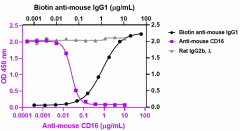
-

Biotin anti-mouse IgG1 (Cat. No. 406604) (black circles) binds to immobilized recombinant mouse FcγRIII (CD16) (Cat. No. 790104). Ultra-LEAF™ purified anti-mouse CD16 (clone W20015B) (purple squares) inhibits the binding in a dose-dependent manner whereas the purified rat IgG2b, λ isotype control (Cat. No. 403801) (gray triangles) does not have the effect. This antibody blocks the binding of 11 µg/mL biotin anti-mouse IgG1 to 5 µg/mL immobilized recombinant mouse FcγRIII (CD16). ND50 range: 0.02 - 0.15 µg/mL
| Cat # | Size | Price | Quantity Check Availability | Save | ||
|---|---|---|---|---|---|---|
| 945804 | 1 mg | 1205 CHF | ||||
| 945803 | 100 µg | 358 CHF | ||||
CD16, also known as FcγRIII, is a low affinity IgG Fc receptor for a broad range of different isotypes. It primarily exists as two distinct forms: FcγRIIIA/CD16a and FcγRIIIB/CD16b, which are encoded by two nearly identical genes in humans. The expression of the two isoforms is tissue-specific. FcγRIIIA is a 50-65 kD type I transmembrane protein that is expressed on the surface of NK cells, activated monocytes, macrophages, and placental trophoblasts in humans. FcγRIIIB is a 48 kD GPI-anchored protein. Its extracellular domain is over 95% homologous to that of FcγRIIIA, and it is expressed specifically on neutrophils. FcγRIIIA can bind aggregated IgG or IgG-antigen complex which functions in NK cell activation, phagocytosis, and antibody-dependent cell-mediated cytotoxicity (ADCC). Several studies indicated that the post-translational modifications of FcγRIIIA or IgG regulate FcγRIIIA-mediated functions. The glycosylation of FcγRIIIA is mandatory for high affinity binding to Fc. Additionally, lack of fucosylation of Fc glycans dramatically enhance ADCC by improving the binding of FcγRIIIA and IgG. It has been reported that the polymorphism (F176V) showed a greater binding capacity to IgG, leading to increasing antibody-dependent NK cell cytotoxicity and susceptibility to autoimmune diseases. The missense mutation (L66H) causes immunodeficiency 20 disease (IMD20). FcγRIIIA associates with γ and zeta chains of T-cell antigen receptor complex (CD3:TCR) and FcεRIγ on human NK cells, suggesting involvement of distinct signal-transducing function.
Product DetailsProduct Details
- Verified Reactivity
- Mouse
- Antibody Type
- Monoclonal
- Host Species
- Rat
- Immunogen
- Recombinant mouse CD16 (Fcγ RIII)
- Formulation
- 0.2 µm filtered in phosphate-buffered solution, pH 7.2, containing no preservative.
- Endotoxin Level
- Less than 0.01 EU/µg of the protein (< 0.001 ng/µg of the protein) as determined by the LAL test.
- Preparation
- The Ultra-LEAF™ (Low Endotoxin, Azide-Free) antibody was purified by affinity chromatography.
- Concentration
- The antibody is bottled at the concentration indicated on the vial, typically between 2 mg/mL and 3 mg/mL. Older lots may have also been bottled at 1 mg/mL. To obtain lot-specific concentration and expiration, please enter the lot number in our Certificate of Analysis online tool.
- Storage & Handling
- The antibody solution should be stored undiluted between 2°C and 8°C. This Ultra-LEAF™ solution contains no preservative; handle under aseptic conditions.
- Application
-
Block - Quality tested
- Recommended Usage
-
Each lot of this antibody is quality control tested by blocking the binding of 11 µg/mL biotin anti-mouse IgG1 antibody (Cat. No. 406604) to 5 µg/mL immobilized recombinant mouse FcγRIII (CD16) (Cat. No. 790104). ND50 range: 0.02 - 0.15 µg/mL. It is recommended that the reagent be titrated for optimal performance for each application.
- RRID
-
AB_2910506 (BioLegend Cat. No. 945804)
AB_2910506 (BioLegend Cat. No. 945803)
Antigen Details
- Structure
- Immunoglobulin family
- Distribution
-
NK cells, activated monocytes, macrophages, neutrophils, subpopulation of T cells, immature thymocytes
- Function
- Low affinity IgG Fc receptor, phagocytosis, ADCC
- Interaction
- FcγR subunit
- Ligand/Receptor
- Aggregated IgG, IgG-antigen complex
- Cell Type
- Dendritic cells, Macrophages, Monocytes, Neutrophils, NK cells
- Biology Area
- Immunology, Innate Immunity
- Molecular Family
- CD Molecules, Fc Receptors
- Antigen References
-
- Bruhns P. 2012. Blood. 119:5640-9.
- Hirano M, et al. 2007. Nat Immunol. 8:762-71.
- Takai T. 2002. Nat Rev Immunol. 2:580-92.
- Jakus Z, et al. 2008. J Immunol. 180:618-29.
- Nimmerjahn F and Ravetch JV. 2005. Science. 310:1510-2.
- Hazenbos WL, et al. 1996. Immunity. 5:181-8.
- Hazenbos WL, et al. 1998. J Immunol. 161:3026-32.
- Watanabe N, et al. 1999. Blood. 94:3855.
- Gene ID
- 14131 View all products for this Gene ID
- Specificity (DOES NOT SHOW ON TDS):
- CD16
- Specificity Alt (DOES NOT SHOW ON TDS):
- CD16
- App Abbreviation (DOES NOT SHOW ON TDS):
- Block
- Hidden Names (DOES NOT SHOW ON TDS):
- mCD16,MCD16,mcd16,mouse cd16,MOUSE CD16,mFcγRIII,MfcγRIII,mcγrIII,Fc gamma receptor,Fc gamma receptor 3
- UniProt
- View information about CD16 on UniProt.org
Related FAQs
- Do you guarantee that your antibodies are totally pathogen free?
-
BioLegend does not test for pathogens in-house aside from the GoInVivo™ product line. However, upon request, this can be tested on a custom basis with an outside, independent laboratory.
- Does BioLegend test each Ultra-LEAF™ antibody by functional assay?
-
No, BioLegend does not test Ultra-LEAF™ antibodies by functional assays unless otherwise indicated. Due to the possible complexities and variations of uses of biofunctional antibodies in different assays and because of the large product portfolio, BioLegend does not currently perform functional assays as a routine QC for the antibodies. However, we do provide references in which the antibodies were used for functional assays and we do perform QC to verify the specificity and quality of the antibody based on our strict specification criteria.
- Does BioLegend test each Ultra-LEAF™ antibody for potential pathogens?
-
No, BioLegend does not test for pathogens in-house unless otherwise indicated. However, we can recommend an outside vendor to perform this testing as needed.
- Have you tested this Ultra-LEAF™ antibody for in vivo or in vitro applications?
-
We don't test our antibodies for in vivo or in vitro applications unless otherwise indicated. Depending on the product, the TDS may describe literature supporting usage of a particular product for bioassay. It may be best to further consult the literature to find clone specific information.
Other Formats
View All CD16 Reagents Request Custom Conjugation| Description | Clone | Applications |
|---|---|---|
| Ultra-LEAF™ Purified anti-mouse CD16 | W20015B | Block |
Customers Also Purchased
Compare Data Across All Formats
This data display is provided for general comparisons between formats.
Your actual data may vary due to variations in samples, target cells, instruments and their settings, staining conditions, and other factors.
If you need assistance with selecting the best format contact our expert technical support team.
-
Ultra-LEAF™ Purified anti-mouse CD16

Biotin anti-mouse IgG1 (Cat. No. 406604) (black circles) bin...
 Login / Register
Login / Register 






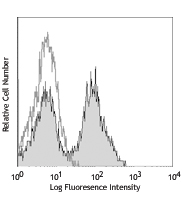
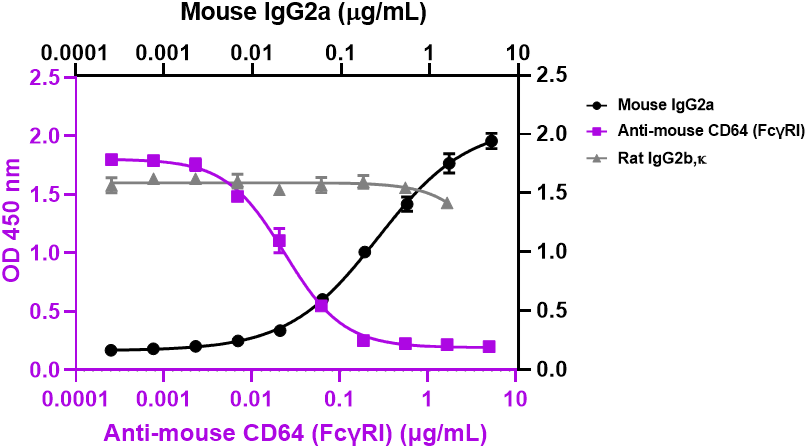
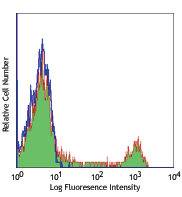
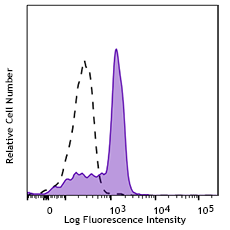



Follow Us